For the 2025 school year, there is 1 public middle school serving 68 students in Riverway Learning Community Charter School District. This district's average middle testing ranking is 2/10, which is in the bottom 50% of public middle schools in Minnesota.
Public Middle School in Riverway Learning Community Charter School District have an average math proficiency score of 20% (versus the Minnesota public middle school average of 39%), and reading proficiency score of 30% (versus the 49% statewide average).
Minority enrollment is 19% of the student body (majority Black), which is less than the Minnesota public middle school average of 38% (majority Black and Hispanic).
Overview
This School District
This State (MN)
# Schools
2 Schools
1,003 Schools
# Students
127 Students
272,988 Students
# Teachers
7 Teachers
17,811 Teachers
Student : Teacher Ratio
18:1
18:1
District Rank
Riverway Learning Community Charter School District, which is ranked within the bottom 50% of all 522 school districts in Minnesota (based off of combined math and reading proficiency testing data) for the 2021-2022 school year.
The school district's graduation rate of 50% has decreased from PS% over five school years.
Overall District Rank
#384 out of 527 school districts
(Bottom 50%)
(Bottom 50%)
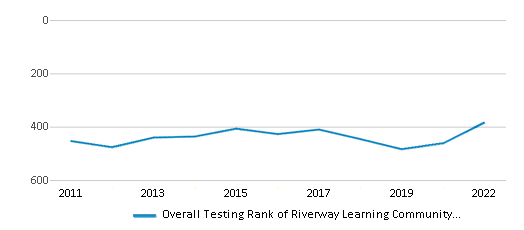
Math Test Scores (% Proficient)
20-29%
45%

Reading/Language Arts Test Scores (% Proficient)
40-44%
51%

Science Test Scores (% Proficient)
20-29%
41%

Graduation Rate
≥50%
84%
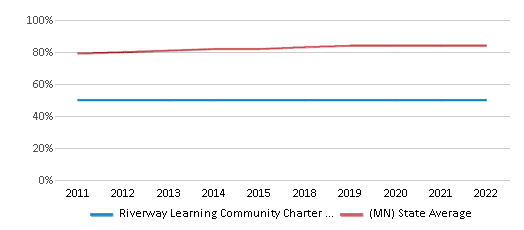
Students by Ethnicity:
Diversity Score
0.40
0.59
# American Indian Students
n/a
6,086 Students
% American Indian Students
n/a
2%
# Asian Students
n/a
17,993 Students
% Asian Students
n/a
7%
# Hispanic Students
6 Students
30,064 Students
% Hispanic Students
5%
11%
# Black Students
8 Students
32,798 Students
% Black Students
6%
12%
# White Students
97 Students
169,010 Students
% White Students
76%
62%
# Hawaiian Students
n/a
306 Students
% Hawaiian Students
n/a
n/a
# Two or more races Students
16 Students
16,731 Students
% of Two or more races Students
13%
6%
Students by Grade:
# Students in PK Grade:
3
847
# Students in K Grade:
8
2,545
# Students in 1st Grade:
8
2,825
# Students in 2nd Grade:
8
2,938
# Students in 3rd Grade:
8
2,965
# Students in 4th Grade:
8
3,207
# Students in 5th Grade:
8
11,547
# Students in 6th Grade:
8
53,234
# Students in 7th Grade:
12
63,243
# Students in 8th Grade:
11
64,723
# Students in 9th Grade:
12
14,851
# Students in 10th Grade:
10
15,978
# Students in 11th Grade:
12
16,184
# Students in 12th Grade:
11
17,901
# Ungraded Students:
-
-
District Revenue and Spending
The revenue/student of $14,811 in this school district is less than the state median of $17,854. The school district revenue/student has stayed relatively flat over four school years.
The school district's spending/student of $14,504 is less than the state median of $18,580. The school district spending/student has stayed relatively flat over four school years.
Total Revenue
$2 MM
$15,547 MM
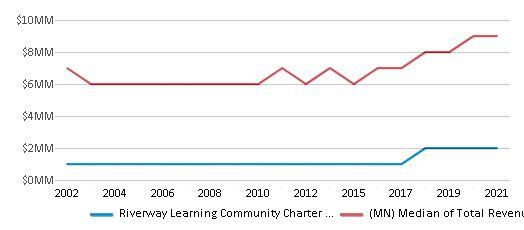
Spending
$2 MM
$16,179 MM
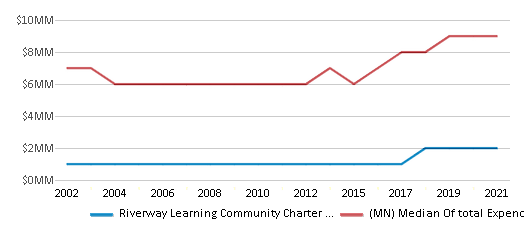
Revenue / Student
$14,811
$17,854

Spending / Student
$14,504
$18,580
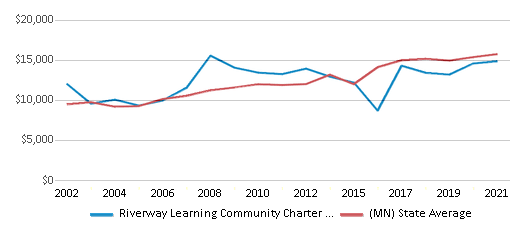
Best Riverway Learning Community Charter School District Public Middle Schools (2025)
School
(Math and Reading Proficiency)
(Math and Reading Proficiency)
Location
Grades
Students
Rank: #11.
Riverway Secondary
Charter School
(Math: ≤20% | Reading: 21-39%)
Rank:
Rank:
2/
Bottom 50%10
1200 Storrs Pond Road
Winona, MN 55987
(507) 474-6120
Winona, MN 55987
(507) 474-6120
Grades: 7-12
| 68 students
Recent Articles

Year-Round Or Traditional Schedule?
Which is more appropriate for your child? A year-round attendance schedule or traditional schedule? We look at the pros and cons.

Why You Should Encourage Your Child to Join a Sports Team
Participating in team sports has a great many benefits for children, there is no doubt. In this article you will learn what those benefits are.

White Students are Now the Minority in U.S. 九游体育s
Increasing birth rates among immigrant families from Asia and Central and South America, combined with lower birth rates among white families, means that for the first time in history, public school students in the United States are majority-minority. This shift in demographics poses difficulties for schools as they work to accommodate children of varying language abilities and socio-economic backgrounds.





